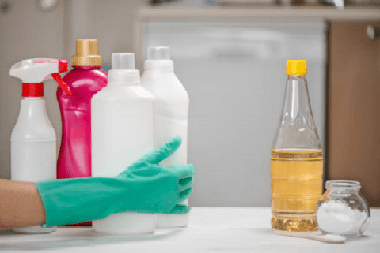Antiseptics and antibiotics >>>> What is an antiseptic?
What is an antiseptic?

The very concept of antiseptics as a method implies that such an effect (mechanical, physical antiseptic, chemical or biological) will be exerted on pathogenic organisms , which will lead either to the complete destruction of pathogenic subjects, or to the impossibility of reproduction of pathogens as a result of unfavorable conditions created for them. Accordingly, antiseptic (in a broad sense) is a "tool" by which the desired results are achieved. The role of such a tool is played by mechanical devices, physical phenomena, chemical reagents, biochemical agents. Some of them are used for external, others - for internal exposure. There are many principles for classifying types of antiseptics. But for a better understanding of the principles of action of antiseptics, we will touch on several specific classifications of the antiseptics themselves.


In the direction of action of antiseptics there are:
- antiviral - act exclusively on viruses,
- antibacterial - only bacteria will be the object of their action,
- antifungal - destroy only fungi,
- antiparasitic - aimed at the death of protozoa,
- combined action.
Since the object of action of an antiseptic is a living cell, the mechanism of action of an antiseptic will differ depending on which structural part of this cell and how it will act.
Based on this, they distinguish:
- the direct effect of an antiseptic on the cellular structure by its destruction, oxidation, attack on the membrane, attack on metabolic processes or enzymatic activity of the cell;
- indirect effect of an antiseptic , which involves not a direct effect of an antiseptic on a cell, but stimulation of immune defense mechanisms (agents of innate or acquired immunity), lysis of necrotic tissues by macrophage enzymes.
The end effect of the antiseptic action is:
- germicidal ( bactericidal effect) - the microorganism dies,
- germiostatic ( bacteriostatic effect) - the microorganism stops multiplying.
Which effect will be achieved, germicidal or germiostatic, depends on many factors:
- from the concentration of the antiseptic,
- from the duration of exposure to antiseptic,
- from the sensitivity of the microbe to the effects of antiseptic,
- on the temperature and chemical composition of the environment in which the antiseptic works,
- from the presence of protein compounds, in the presence of which the activity and effectiveness of some antiseptics decreases.


According to the purpose of use, antiseptics are distinguished:
- For the prevention of infections
- For therapeutic treatment
- For disinfection of premises, medical instruments, household items, skin surface
- Double acting
After the discovery of antibiotics, the word "antiseptic" began to be used in a narrower sense - meaning a bacteriostatic and disinfectant. But in essence, an antibiotic is a special case of an antiseptic that has a direct antibacterial effect on a microorganism (bacterium), has a bactericidal effect and is used for therapeutic treatment.
How are antiseptics used?
Depending on whether the antiseptic is designed for internal or external use, the method of using the antiseptic is also selected.
For external use during treatment, surface antiseptics are used that can penetrate the skin and mucous membranes (creams, ointments, gels, lotions, tonics, powders, aerosols, rinses and irrigation solutions).
Inside (enterally) antiseptics are used in the form of tablets for resorption, powders; antibiotic capsules. And also inside (rectally) antiseptics are used in the form of enemas or suppositories.
Antiseptics - antibiotics are injected intramuscularly into the tissue.
For the prevention of purulent processes, antiseptics are injected into the cavities of organs and blood vessels, intravenous, intra-arterial and intra-aortic antiseptics are used. Intraosseous administration of drugs (into cancellous bones) is also practiced, and in the future, endolymphatic administration of antimicrobial drugs is considered.
The instructions for the use of antiseptics always specify for what purposes this antiseptic is allowed to be used, and what the expected result will be. This information is "encrypted" in the words: "for external use", "for internal use", "for disinfection", "has a bacteriostatic effect", "has a bactericidal effect", "has an antibacterial effect", "has an antifungal effect" and so like that.
Antiseptics for external use should not be swallowed, even those intended for rinsing and irrigating the mouth (although in this case the antiseptic solution has such a low concentration that if any minimum dose of it is accidentally swallowed, for example, during rinsing, a fatal accident it will not, but it can injure the mucous membranes of the gastrointestinal tract).
Disinfectants, which do not bear the inscription "for the oral cavity", should not be taken internally (even if the idea of using them for rinsing).

Read

Read



























